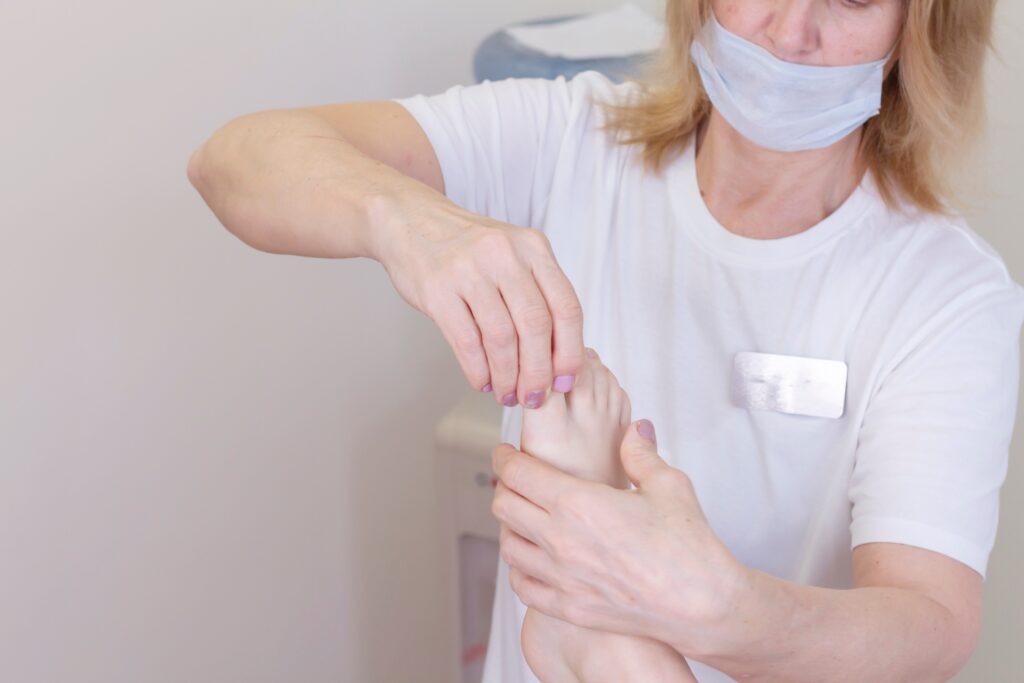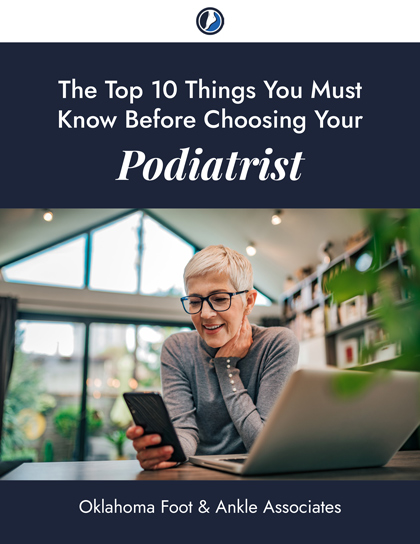
Bunions, characterized by a bony bump at the base of the big toe, can be a source of significant discomfort and affect your ability to walk comfortably. The decision between surgical and non-surgical treatments for bunions depends on various factors, including the severity of the condition, pain levels, and the impact on daily life. This blog provides an overview of both treatment approaches to help you make an informed decision.
Understanding Bunions
A bunion, or hallux valgus, occurs when the big toe deviates towards the second toe, causing the first metatarsal bone to protrude. This misalignment can lead to pain, swelling, and difficulty wearing certain types of footwear. Bunions can develop due to genetic factors, foot stress, or wearing ill-fitting shoes.
Non-Surgical Treatments for Bunions
1. Footwear Modifications
- Wear Proper Shoes: Opt for shoes with a wide toe box, good arch support, and low heels to alleviate pressure on the bunion. Avoid narrow or high-heeled shoes that exacerbate discomfort.
- Use Orthotic Devices: Custom or over-the-counter orthotic inserts can provide additional support and help redistribute pressure away from the bunion.
2. Padding and Taping
- Bunion Pads: Soft padding can reduce friction and pressure on the bunion, offering temporary relief. Gel or moleskin pads can be placed inside your shoes for added comfort.
- Toe Taping: Taping techniques can help realign the big toe and reduce strain on the bunion. Consult with a podiatrist to learn proper taping methods.
3. Pain Relief and Anti-Inflammatory Medications
- NSAIDs: Nonsteroidal anti-inflammatory drugs, such as ibuprofen or naproxen, can help manage pain and inflammation associated with bunions. Use these medications as directed and consult your healthcare provider if you have any concerns.
4. Foot Exercises and Stretching
- Toe Exercises: Strengthening exercises for the foot and toe muscles can improve alignment and reduce pain. Exercises such as toe curls and stretching can enhance flexibility and support.
- Stretching: Regular stretching of the foot and toe muscles can help relieve tension and discomfort.
5. Ice Therapy
- Application of Ice: Applying ice to the bunion can reduce swelling and numb the pain. Use an ice pack for 15-20 minutes several times a day as needed.
Surgical Treatments for Bunions
1. Bunionectomy
- Procedure Overview: A bunionectomy involves removing the bony protrusion and realigning the toe. This procedure can be performed through various techniques, depending on the severity of the bunion and the surgeon's approach.
- Recovery: Post-surgery recovery may involve wearing a special shoe, limited weight-bearing, and physical therapy. Most patients can return to normal activities within a few months.
2. Osteotomy
- Procedure Overview: Osteotomy involves cutting and repositioning the bones of the toe and foot to correct alignment. This technique addresses the underlying structural issues contributing to the bunion.
- Recovery: Similar to bunionectomy, recovery involves a period of immobilization and rehabilitation. Full recovery may take several weeks to months.
3. Arthrodesis
- Procedure Overview: Arthrodesis, or joint fusion, involves fusing the bones in the affected joint to eliminate movement and pain. This technique is typically used for more severe bunion cases.
- Recovery: Recovery from arthrodesis includes immobilization and gradual weight-bearing as healing progresses. This procedure aims to provide long-term relief and stability.
4. Minimally Invasive Bunion Surgery
- Procedure Overview: Minimally invasive techniques use smaller incisions and specialized instruments to correct bunion deformities. These methods can result in less pain and quicker recovery compared to traditional surgery.
- Recovery: Recovery time is often shorter, with less swelling and discomfort. Patients may return to normal activities more quickly.
Choosing the Right Treatment
Deciding between surgical and non-surgical treatments depends on various factors, including the severity of your bunion, pain levels, lifestyle, and personal preferences. Non-surgical treatments are generally recommended for mild to moderate bunions, while surgical options are considered for more severe cases or when conservative measures have not provided adequate relief.
Conclusion
Managing painful bunions involves understanding your options and working with a healthcare provider to determine the best course of action. Non-surgical treatments can offer relief and improve foot function, while surgical interventions may be necessary for more significant deformities or persistent pain. For personalized advice and treatment, consult with a foot specialist to explore the best options for your specific condition.
Managing Bunions: Surgical and Non-Surgical Options for Relief at Oklahoma Foot and Ankle Associates
Dealing with bunions can be challenging, but understanding your treatment options can help you find effective relief and improve your quality of life. Whether you’re considering non-surgical methods or exploring surgical interventions, addressing bunion discomfort with the right approach is essential for long-term comfort and functionality.
For expert advice and personalized care tailored to your needs, consult with Drs. Gordon Bean, Armando Carro, Scott Morris, and Steve Walker at Oklahoma Foot and Ankle Associates. They offer comprehensive evaluation and treatment options to help you manage and alleviate bunion pain. Contact their Edmond office at (405) 340-9251, or visit the Moore/Midwest City office at (405) 794-6691. For more information and to schedule an appointment, please visit their website.










